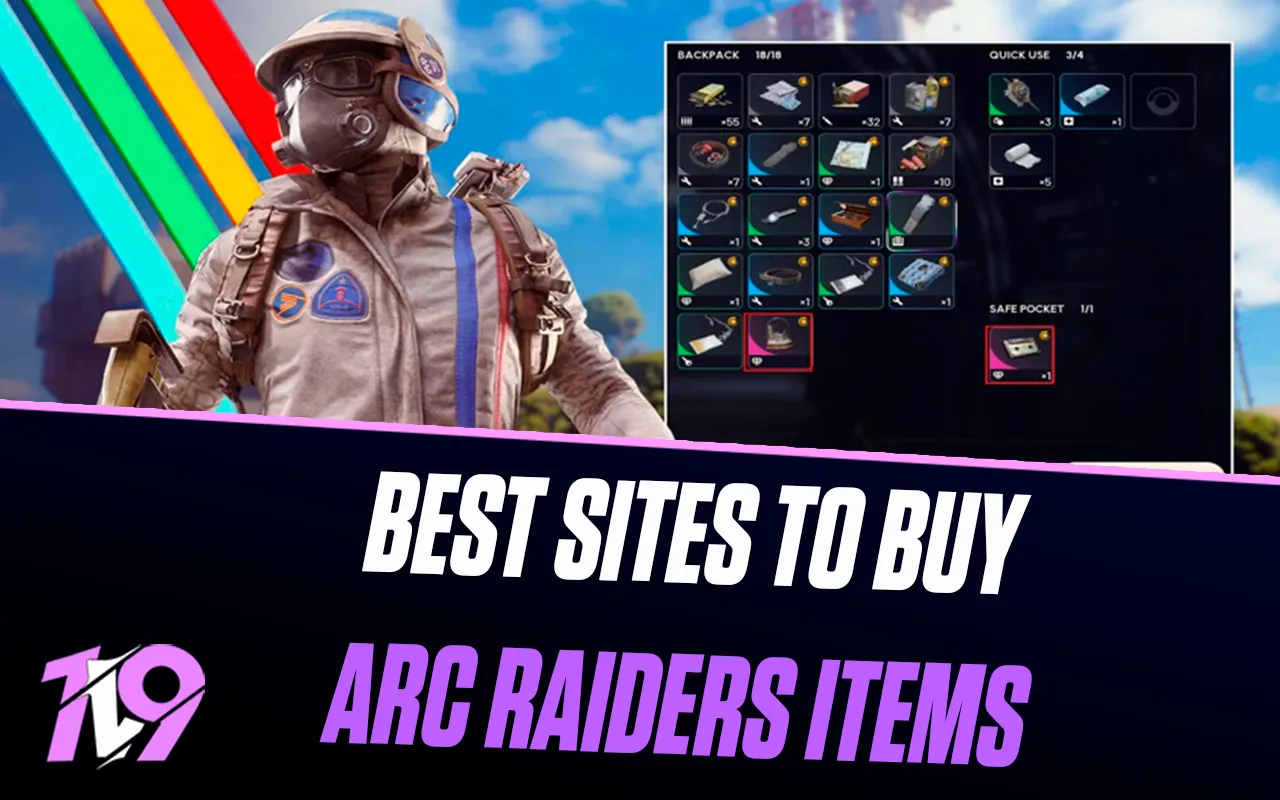
Apex Legends Vs Valorant: Which Game Is Better?
Apex Legends and Valorant have both risen to prominence in the competitive FPS arena, attracting legions of fans with their dynamic gameplay. Despite their similarities in popularity and player dedication, these games diverge sharply in genre—Apex Legends is a battle royale, while Valorant is a tactical shooter. Each game boasts its own set of strengths and weaknesses.
In this article, we aim to provide a thorough comparison of both games, breaking down their unique features, gameplay mechanics, and community engagement to help you determine which game might be the better choice for your gaming preferences. Let’s delve into the details and see how these two titans of the FPS world stack up against each other.
#7: Graphics - Apex Legends

Apex Legends is renowned for its superior graphics, which feature a vibrant, visually rich aesthetic combined with expansive and varied landscapes. The game’s futuristic design is meticulously detailed, from lush terrains to high-tech cityscapes, all enhanced by dynamic lighting effects that contribute to an immersive gameplay experience. Character designs in Apex Legends are distinct and stylized, reflecting each legend’s backstory and abilities with a clarity that enriches the visual storytelling of the game.
However, it’s important to recognize the impressive graphics of Valorant as well. While Valorant may not match the graphical fidelity of Apex Legends, it boasts a unique artistic style that is both colorful and visually appealing. The character designs are sleek and carry a distinct animated flair that stands out in the tactical shooter space. Valorant’s graphics play a significant role in the game’s performance on PCs, optimized to run smoothly on a wide range of hardware specifications without sacrificing the quality of visual effects. This ensures that players can enjoy high frame rates essential for competitive gameplay.
Both games use their graphical strengths differently to enhance the player experience: Apex Legends with its detailed, immersive world and Valorant with its clean, performance-optimized visual approach that emphasizes vibrant colors and distinctive character styles.
#6: Gameplay - Valorant

Valorant’s gameplay is often considered superior to Apex Legends for those who value strategic depth, team coordination, and precision shooting. As a tactical shooter, Valorant emphasizes methodical gameplay where careful planning and execution are paramount. This contrasts with the high-octane, dynamic combat of Apex Legends. Valorant requires precise aim, particularly rewarding headshots, and mastery of weapons with significant recoil, making gunplay central to success. An economic system adds a layer of strategy, forcing players to make critical decisions about when to buy or save resources. Each agent in Valorant has unique abilities that define specific roles within the team, enhancing coordination and strategic planning. The map design, with its tactical choke points and pre-defined sites, requires a deep understanding of map control and strategic area defense. These elements combine to offer a gameplay experience that appeals to those who prefer a slower-paced, more controlled environment where tactical acumen is just as important as quick reflexes, providing a stark contrast to the battle royale format of Apex Legends.
#5: Characters - Valorant

In Valorant, the Agents offer a depth of strategic gameplay that many consider superior to the Legends in Apex Legends, thanks to their diverse abilities that extend beyond combat to influence the overall tactical flow of matches. Each Agent in Valorant brings unique utility skills designed for initiating, defending, or gathering intelligence, fostering strategic planning over brute force. Valorant’s characters are divided into distinct roles—Duelists, Initiators, Controllers, and Sentinels—each integral to forming effective team strategies and requiring players to deeply understand their roles within a team’s framework. This emphasis on synergy and coordination in utilizing Agent abilities allows for complex, satisfying team plays that are essential in Valorant’s round-based tactical gameplay, contrasting with the often chaotic, fast-paced skirmishes of Apex Legends where individual prowess can overshadow team tactics. Moreover, the strategic use of these abilities demands a higher level of tactical thinking and coordination, where the impact of an ability significantly alters the strategic landscape of a round, rather than just contributing to direct combat. This depth in character utility and the steep learning curve for mastering each Agent’s toolkit appeals to players who favor deep tactical engagement over straightforward combat encounters, giving Valorant an edge in terms of character-driven strategy.
#4: Game Modes - Valorant

Valorant’s game modes are often lauded as superior to those of Apex Legends due to their variety and strategic depth, catering effectively to different player skills and competitive engagement. The main 5v5 mode in Valorant emphasizes tactical play through bomb planting and defusal, demanding precise teamwork and strategic planning, in contrast to the fast-paced battle royale format of Apex Legends. Valorant also offers additional modes like Spike Rush for faster, condensed gameplay, and Deathmatch for refining shooting skills, each designed to enhance different aspects of play. Furthermore, Valorant includes comprehensive practice options that exceed those available in Apex Legends, allowing players to thoroughly hone their abilities and strategies. This focus on diverse, structured gameplay not only helps players find and develop within their preferred style but also solidifies Valorant’s orientation towards e-sports and competitive integrity, making it particularly appealing to those seeking a methodical and strategy-focused gaming experience.
#3: Shooting And Movement - Apex Legends

The shooting and movement mechanics in Apex Legends are widely considered superior to those in Valorant, primarily due to their dynamic nature and the fluid integration of mobility with combat, which create a highly engaging and fast-paced gameplay experience.
In Apex Legends, movement is a cornerstone of the gameplay. The game features advanced movement mechanics such as sliding, ziplining, and wall jumping, which not only add layers of depth to navigation but also to combat strategy. These mechanics allow players to execute high-speed maneuvers that are crucial for both evading enemy fire and closing the gap for attacks. The ability to traverse the map swiftly and unpredictably makes engagements more thrilling and skill-dependent.
Additionally, the shooting mechanics in Apex Legends are designed to complement this high mobility. Weapons in Apex Legends have unique handling properties that require players to master diverse aiming skills. The game features a broad range of weapons that cater to different play styles and combat scenarios, from close-quarters shotguns to long-range snipers, each with distinct recoil patterns and firing rates. This variety demands proficiency in multiple combat techniques, enhancing the overall skill ceiling of the game.
Unlike Valorant, where gameplay revolves more around tactical positioning and strategic use of abilities in relatively static environments, Apex Legends emphasizes fluidity and rapid movement. The integration of shooting with advanced movement mechanics in Apex Legends offers a kinetic combat experience where agility and aiming precision are equally important, making it stand out as a shooter that rewards both tactical intelligence and physical dexterity.
This combination of fast-paced movement with intricate shooting dynamics forms the core appeal of Apex Legends, appealing to players who enjoy an adrenaline-pumping action and the freedom to create complex, on-the-fly strategies during intense firefights.
#2: Maps - Valorant

Valorant’s maps are often praised over those in Apex Legends due to their meticulous design that prioritizes tactical gameplay and strategic diversity. The maps in Valorant feature symmetric layouts to ensure balanced play, with each map constructed to support close-quarters combat and strategic ability use. Unlike the sprawling, open-world maps of Apex Legends designed for exploration, Valorant’s compact maps lead to frequent engagements and make strategic positioning crucial. They include complex elements like one-way windows, teleporters, and doors, adding depth and allowing for innovative tactics and mind games. Additionally, the maps offer visual clarity and a coherent aesthetic that aids navigation and enhances gameplay understanding in competitive settings. This focused design in Valorant supports a deep tactical experience, making each map not just a battlefield but a critical component of the game’s strategic framework.
#1: Competitive and Esports - Valorant

Valorant stands out in the competitive esports landscape, often viewed as superior to Apex Legends, thanks to its structured gameplay, strategic depth, and robust developer support which collectively foster a thriving competitive environment. Designed with competitive play in mind, Valorant’s 5v5 format and clear-cut roles promote consistent, strategic gameplay that enhances both the development of complex team strategies and high-stakes competitive play. Riot Games has invested heavily in Valorant’s esports ecosystem, establishing a global tournament framework including the Valorant Champions Tour, which has broadened its reach and cultivated a diverse competitive community. This commitment is supported by frequent game updates, balance changes, and a transparent communication strategy that engages the community and provides clear pathways for amateurs to progress in their competitive careers. In contrast to Apex Legends, which also features competitive play but with less frequent and structured support, Valorant offers a more predictable and rewarding environment for esports athletes, teams, and sponsors, contributing to its growth and stability in the esports world.
Conclusion - Valorant Wins
Valorant emerges as the superior choice for players who prioritize a deeply strategic, tactical, and competitive gaming experience. With its carefully designed gameplay mechanics, precise shooting requirements, and unique agent abilities, Valorant offers a complex and rewarding environment that challenges players to think critically and strategically. Supported robustly by Riot Games, Valorant’s esports scene is well-structured and globally integrated, providing consistent competitive opportunities and professional pathways that nurture both amateur and professional talent. This comprehensive support and the tactical depth of the game make Valorant not just a popular esports title but a benchmark for competitive gaming. While Apex Legends also presents a dynamic and engaging experience, Valorant’s commitment to tactical play, community engagement, and esports infrastructure sets it apart as the preferable option for those seeking a competitively rich and professionally rewarding gaming experience.
Posted On: October 27th, 2024
Recent Articles
💬 Need help?
Our 1v9 support team is available 24/7 to help you with any questions or issues you may have.
support@1v9.gg
Loading...
1v9.gg is not endorsed or affiliated by any game developers or publishers.
2025 1v9, All Rights Reserved, Created By NightDev







